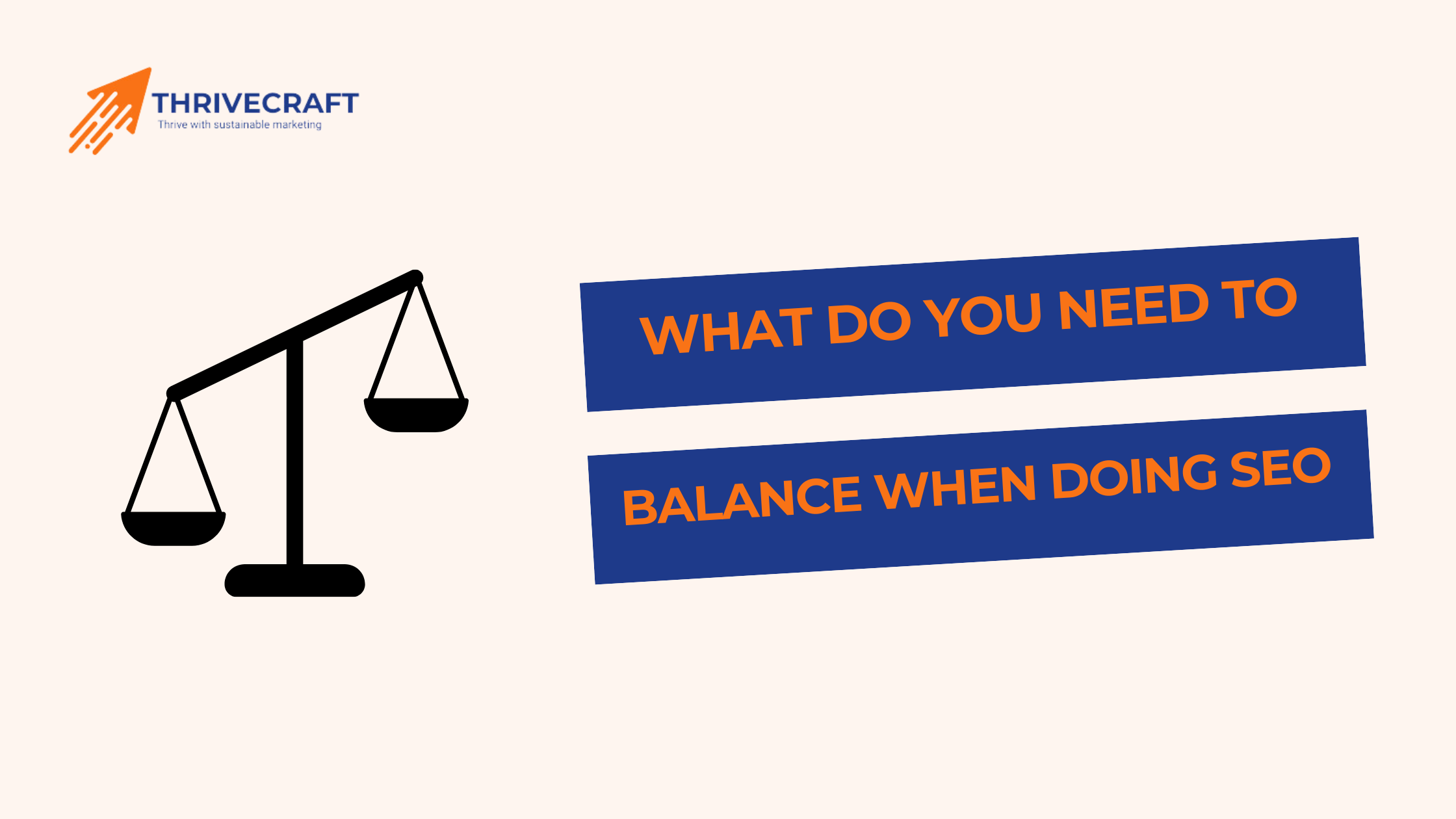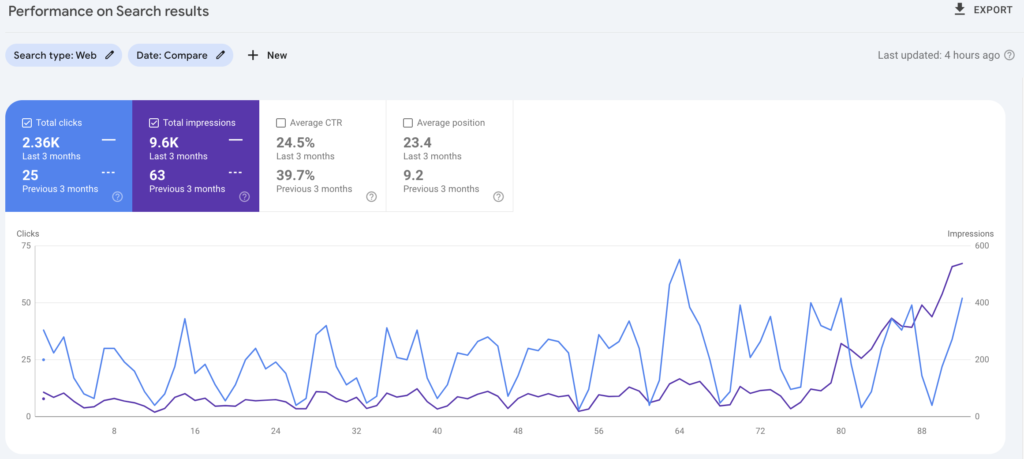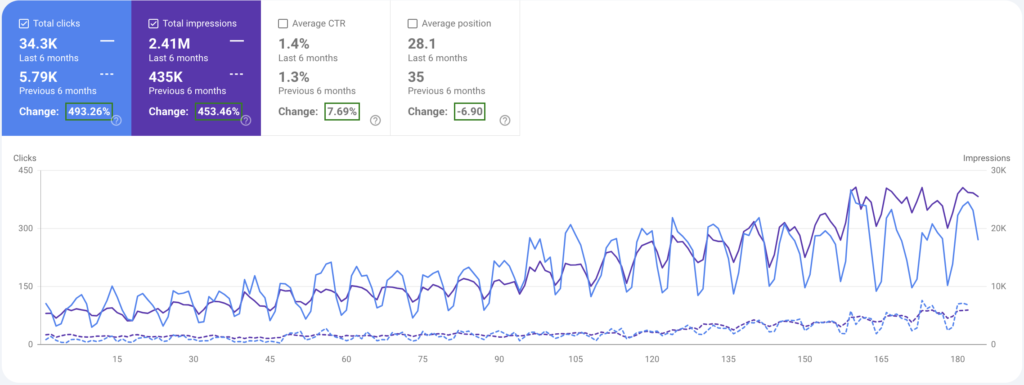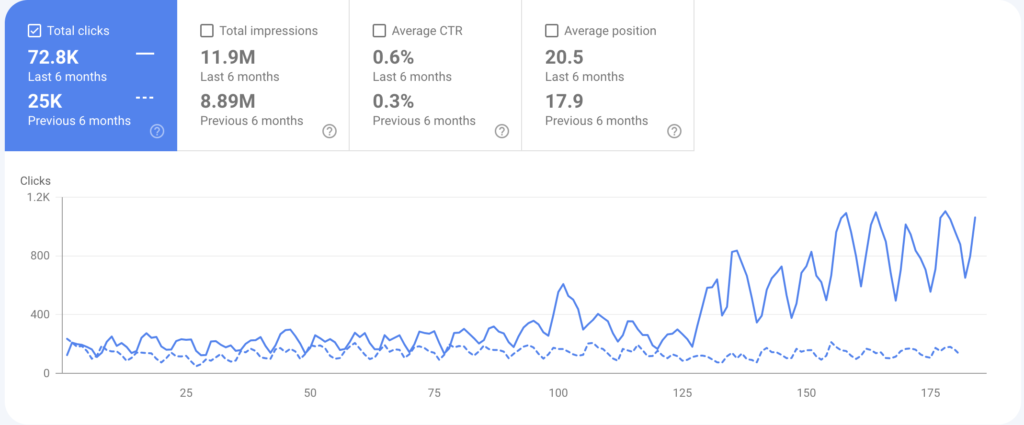Where all businesses fight to stand out online in an entirely tech-subordinate world, one can quickly get a top ranking with the proper B2B SEO strategies. But how do B2B companies know which ones work and produce results?
B2B SEO case studies with real-world success stories are essential in how data-driven strategies can propel some businesses to the next level.
When properly strategized, a B2B SEO case study goes beyond showcasing successful campaigns. It presents a clear roadmap for companies to optimize their online presence, address industry issues, and understand how to rank higher.
These case studies break down every aspect of an SEO campaign, put out obstacles, strategic solutions, and innovative business results.
From improving organic traffic to enhancing the conversion rate, B2B SEO case studies open a goldmine of insights. Any company can use them to refine its marketing efforts. They note the KPIs of search ranking, click-through rates (CTR), and lead generation for the long-term impact of SEO investments compared to paid marketing.
At Thrivecraft, we believe in the power of SEO. Whether you’re a startup, an enterprise, or a SaaS company. We carefully craft our SEO strategies to help you rise through the ranking and deliver noticeable business results.
We are experts in creating better case studies. Read our past case studies to learn more about how we develop our SEO strategies. We provide better lead generation and improved SEO practices that rank faster in Google search results.
Do you want to check out how prosperous brands use SEO to beat their competition? Read on to find the secrets behind the high-impact B2B SEO strategies established from real-world case studies.
Are you ready to take your SEO to a whole new level? Join hands with Thrivecraft to build an SEO strategy that promises ongoing growth.
What Is a B2B SEO Case Study?
A B2B SEO case study is a detailed report of various analytics on leveraging SEO strategies to increase business growth online. These case studies help structure an approach to achieving excellent search ranking with real-world examples.
SEO case studies facilitate developers as roadmaps for companies to optimize their online presence. They illustrate an SEO campaign’s challenges, strategies, and results and make it easy to understand which techniques deliver tangible outcomes.
Some of the advantages are:
- They illustrate industry-specific challenges and solutions.
- They provide metrics to guide businesses to invest in strategies that assure proven returns.
- Firms can benchmark their SEO performance better than other firms.
- Companies may improve their strategies through lessons learned from previous successes and failures.
Key Metrics for a Successful SEO Strategy for B2B
Success in the B2B SEO campaign needs an emphasis on measuring key performance indicators (KPIs) that reflect growth in traffic and effect on the business. Here are some key metrics:
- Organically increasing the number of visitors directly from search engines improves website ranking and overall content visibility.
- Keyword rankings monitor the keyword targeted will let you know if your strategy is paying off for your SEO.
- CTR represents the total percentage or ratio of users that clicked through an ad after seeing it. High CTR shows that meta titles and descriptions were compelling enough to make users click through.
- Lead generation and conversion make analyzing issues in business-to-business marketing tactics simple.
- Bounce rates and longer page time suggest the content is relevant and engaging.
- Backlinks play a significant role in determining domain authority and search rankings.
- Higher domain and page authority improves overall search visibility.
- Cost Per Lead (CPL) and Customer Acquisition Cost (CAC) compare other price and sales performance channels. This helps understand whether the SEO investment is effective compared to paid marketing.
Why SEO Is Essential for B2B Businesses
B2B businesses make their choices after extensive research. They utilize search engines to identify solutions and examine different vendors to conclude. Therefore, Search Engine Optimization (SEO) plays a vital role in the growth of B2B business by ensuring visibility to potential clients.
Organic Traffic on B2B Lead Generation affects more than paid advertising. Organic traffic attracts users who are actively seeking out solutions with intent. The benefits of SEO for businesses include:
- B2B buyers often conduct research through Google before making purchases. Achieving high rankings enhances brand visibility and cultivates trust among potential clients.
- Organic traffic is more cost-effective than paid avenues and offers a greater return on investment (ROI).
- When B2B companies optimize content for specific pain points and industry keywords, they attract prospects genuinely interested in their solutions.
- A website optimized for user experience features educational resources like blogs, whitepapers, and case studies. These features lead to conversions through various platforms.
The Importance of Long-Term SEO Strategies for B2B Firms
Sales cycles in B2B transactions take longer than business-to-consumers as they frequently involve multiple decision-makers. Implementing a long-term SEO strategy ensures growth by:
- Regularly generating high-quality content relevant to the industry fosters improved search engine rankings over time.
- Unlike promotional ads, which create a temporary rise in engagement, organic traffic leads to acquisition better with initial investments.
- Consistent appearances within the search result in the credibility and selection of your organization over competitors.
- As Google’s algorithms revolve frequently, it is better to have a long-term SEO approach that allows companies to remain on top of the search rankings.
Comparison: B2B SEO vs. B2C SEO
| Aspect | B2B SEO | B2C SEO |
| Target Audience | Businesses, decision-makers, industry professionals | Individual consumers, the general public |
| Sales Cycle | Long, multi-step requires nurturing | Short, impulsive, quick decision-making |
| Keyword Strategy | Industry-specific, long-tail, low-search volume | Broad, high-volume, short-tail keywords |
| Content Focus | Post educational blogs and other content aligned with best SEO practices | Promotional, product-focused, emotional appeal |
| Lead Generation | Requires forms, gated content, CRM integration | Direct conversions (e-commerce, sign-ups) |
| Search Intent | Research-driven, problem-solving | Transactional, entertainment, or immediate needs |
| Traffic Volume | Lower but highly qualified | Higher with a broader reach |
| Conversion Process | Multiple touchpoints, demo requests, consultations | One-click purchases, direct CTAs |
| Backlink Strategy | Authority-building (guest posts, industry mentions) | Broad outreach, influencer marketing |
| Social Media Impact | Lower impact, more focus on LinkedIn & Twitter | Higher impact, driven by Instagram or Facebook |
| SEO ROI Timeline | Long-term (months to a year) | Short-term (weeks to months) |
Core Components of a Successful B2B SEO Strategy
A strong B2B SEO strategy focuses on driving high-quality traffic, leads generation, and building authority in a niche market. Here’s how to structure a scalable and effective SEO strategy for B2B businesses:
Conduct Keyword Research for B2B Audiences
B2B buyers often use long-tail keywords that indicate research or purchase intent. Focus on:
- Solution-based keywords: “Best cloud cost optimization software.”
- Comparison queries: “AWS cost optimization vs. GCP cost optimization.”
In comparison to B2C, B2B businesses are industry-specific. Use keyword research tools such as Semrush to find:
- Low-competition long-tail keywords.
- Search terms specific to your industry and pain points.
- Phrases that decision-makers use to evaluate products/services.
Build an Effective Content Marketing Strategy
Create Thought Leadership Content
- Position your brand as an industry authority by publishing:
- In-depth blogs tailored to C-level executives.
- Expert opinion articles addressing industry trends.
- LinkedIn content to engage decision-makers.
Optimize Blog Posts for SEO and User Engagement
- Use compelling meta titles & descriptions.
- Include structured headings (H1, H2, H3) for readability.
- Add internal links to keep users engaged.
- Focus on data-backed insights to increase credibility.
Use Data-Driven Case Studies to Drive Conversions
- SEO impacts business growth, traffic increase, and lead conversions.
- Real-world client success stories.
- Before-and-after metrics to build credibility.
Implement a Scalable Link Building Approach
High-Quality Backlinks From Authoritative Sources
- Improve domain authority and search rankings
- Establish industry credibility
- Drive referral traffic from relevant sites
Strategies to Earn High-Quality Links in a Competitive Market
- Guest posting on industry blogs & publications.
- Create original research & data reports.
- Build relationships with industry influencers & bloggers.
Leverage Technical SEO for Better Visibility
Technical SEO is also as helpful as content seo in increasing online visibility. It defines how search engines can optimistically crawl using these techniques.
Improve Site Speed and Mobile Friendliness
- Use Google PageSpeed Insights to identify performance issues.
- Optimize images, enable caching, and use a Content Delivery Network (CDN).
- Ensure mobile responsiveness for better UX and higher rankings.
Optimize for Indexing and Crawlability
- Submit XML sitemaps to Google Search Console.
- Fix broken links and duplicate content issues.
- Improve internal linking structure for better page authority distribution.
B2B SEO Case Studies: Success Stories
SEO is crucial for driving organic traffic, lead generation, and revenue growth for B2B businesses. Here are five success stories that demonstrate how SEO strategies have transformed businesses.
How a SaaS Company Increased Organic Signups with SEO
The Challenge
- Low organic traffic and a lack of inbound leads.
- Heavy reliance on paid ads increases Customer Acquisition Costs (CAC).
The SEO Approach
- Content Strategy: Created high-value educational content such as blogs, newsletters, or articles targeting pain points.
- Keyword Optimization: Focused on bottom-of-funnel (BoFu) keywords like “best cloud cost optimization software.”
- On-Page SEO Fixes: Improved meta descriptions, internal linking, and structured data.
The Results
- 200% increase in organic signups.
- Reduced CAC by 40%.
How a Tech Brand Scaled Traffic with Content Marketing
The Challenge
Organic growth was inconsistent, which increased heavy reliance on referral traffic and direct sales.
The SEO Approach
- Programmatic SEO: Created scalable content templates for product pages.
- Blog Expansion: Started publishing data-driven industry reports and in-depth articles focusing on important decision-makers.
- Content Refresh: Updated older content for higher ranking potential.
The Results
- 3X increase in organic traffic in 12 months.
- Higher domain authority and brand credibility.
How a Startup Used Link Building to Dominate Competitive Keywords
The Challenge
Struggled to rank against industry giants.
The SEO Approach
- PR-Based Link Building: Secured mentions in industry-leading publications.
- Outreach to Bloggers & Influencers: Earned guest post backlinks from niche websites.
- Created Shareable Content: Produced research-driven whitepapers and reports.
The Results
- 150+ high-quality backlinks acquired.
- Top 3 rankings for high-intent industry keywords.
How a B2B Marketplace Improved Conversion Rates Through SEO
The Challenge
High organic traffic but low conversion rates.
The SEO Approach
- Conversion Rate Optimization (CRO): Redesigned product pages for better UX.
- User-Centric Content: Developed FAQ pages, case studies, and video explainers.
- A/B Testing: Tested different CTAs and landing page structures
The Results
- 50% improvement in conversion rates.
- Higher engagement on product/service pages.
How an Enterprise Brand Reduced CAC with a Long-Term SEO Strategy
The Challenge
Heavy reliance on Google Ads & paid acquisition.
The SEO Approach
- Authority Building: Published thought leadership content and industry insights.
- Evergreen Content Strategy: Focused on guides, case studies, and resource hubs.
- Technical SEO Enhancements: Improved site speed, internal linking, and schema markup
The Results
- 60% lower CAC by shifting focus from paid to organic.
- Sustained organic growth with increasing inbound leads.
Key Takeaways from Successful B2B SEO Campaigns
Here’s what we can learn from a well-structured B2B SEO campaign successful campaigns.
How Content Strategy Drives Organic Growth
- High-value content attracts and nurtures leads.
- In-depth guides, whitepapers, and industry reports really help to educate and engage potential B2B buyers.
- A well-planned content calendar ensures consistent publishing of relevant topics.
- Updating older content with fresh data and insights improves rankings and traffic.
The Role of Link Building in SEO Success
- High-quality backlinks improve domain authority and trust.
- Backlink earnings from industry publications and authoritative websites boost search rankings.
- Guest blogging, PR-based link building, and outreach effectively secure backlinks.
- Data-driven reports and case studies attract natural links from reputable sources.
Why B2B SEO Requires a Multi-Channel Approach
- Multi-channel strategies are crucial to maximize results with SEO incorporation.
- The strategic combination of SEO with LinkedIn marketing and email outreach helps capture leads at different funnel stages.
- Webinars, podcasts, and YouTube content boost SEO impacts by increasing engagement and brand CTA.
- SEO-driven CRO (Conversion Rate Optimization) ensures increased traffic leads to conversions.
How to Measure ROI from SEO Efforts
- Tracking SEO performance is key to long-term success.
- Use Ahrefs to track organic traffic growth and keyword rankings.
- Measure conversion rates, form submissions, and demo requests to assess lead generation impact.
- Compare Customer Acquisition Cost (CAC) from SEO vs. Paid Ads to justify long-term investment.
Common Mistakes to Avoid in B2B SEO
Best B2B SEO strategies can fail if these common mistakes are ignored. It can downgrade your rankings and lead-generation efforts:
Ignorance of technical SEO
This could be the problem if search engines cannot correctly crawl or index your site. Your content won’t rank. Common factors such as slow page speed and poor mobile experience increase bounce rates and lower engagement.
Solution
- Do a regular audit of your site using Google Search Console.
- Focus on improving site speed, mobile optimization, and structured data for better rankings.
- To enhance discoverability, keep eliminating broken links, duplicate content, and crawl errors using the best SEO tools.
Ineffective optimization for buyer intent
Try to target high-volume keywords, but inappropriate low-conversion keywords always lead to useless traffic. B2B buyers are more focused on research-driven content that can align with their requirements.
Solution
- Try to focus on high-intent keywords instead of generic terms.
- Create content tailored for each B2B buyer’s journey stage including awareness, consideration, and decision.
- Use case studies, comparison pages, and whitepapers to nurture leads.
Overlooking the Power of Link Building
It is crucial to have a proper backlinking to the website. Without high-quality backlinks, search engines see your site as less authoritative. Competitors with stronger backlinking can easily outrank you, even with better content.
Solution
- Use strategies to implement PR-based link-building by getting featured in industry publications.
- Always publish data-driven reports, surveys, and infographics to attract organic backlinks.
- Try to build relationships with niche bloggers and influencers for guest posting and co-marketing opportunities.
Thrivecraft – Why is it the Ideal Choice for You?
B2B SEO is not just about search engine rankings; it’s about attracting the right audience and building trust with them to grow your business long-term.
From optimizing for buyer intent to leveraging quality backlinks and data-driven content. A well-executed SEO strategy can be developed with a proper case study of your plan for staying ahead of the competition.
Thrivecraft offers more profound insights into B2B SEO through our experience creating result-driven SEO strategies. This enables us to develop an approach that considers your industry’s challenges.
We provide campaigns that significantly impact organic growth, lead conversions, and recognition after a deep case study. Our data-driven insights, expert SEO skills, and sustainable long-term working process mean your business can get ahead of the search results and surpass competitors.
Are you ready to step up and grow your B2B business with marketing? Thrivecraft will be there forever to answer your call and help you navigate the digital sphere.
Contact us now to find out how we can partner with you and ensure measurable SEO success!
Frequently Asked Questions (FAQs):
How Long Does It Take to See SEO Results for a B2B Business?
SEO (search engine optimization) can take three to six months to show results, but it can sometimes take up to a year.
What Are The Most Effective Link-Building Strategies For B2b?
For B2B link building, the most effective strategies include creating high-quality, valuable content like in-depth guides or industry reports.
How Does SEO Help Reduce Customer Acquisition Costs?
SEO is pivotal in customer acquisition, as it boosts the visibility of your website in search results to attract potential customers actively seeking your products or services.
What Metrics Should B2B Companies Track for SEO Success?
B2B companies should primarily track metrics like organic traffic, keyword rankings, bounce rate, click-through rate (CTR), conversion rate, backlinks, and search visibility to measure their SEO success.











